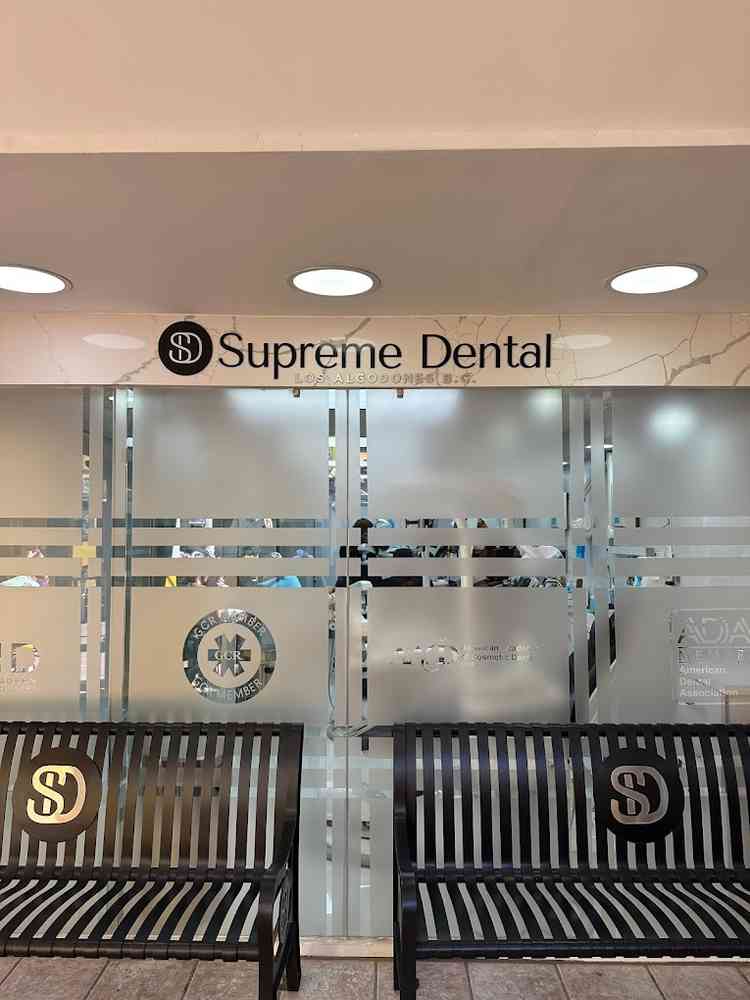Dental Infection Death: How a Simple Tooth Problem Can Turn Fatal

Prathyusha Itikarlapalli
- Content Writer

Key Takeaways
- Ignoring dental infection symptoms may cause death in individuals with a weaker immune system, congenital organ problems, and chronic diseases like diabetes and kidney problems.
- Tooth infection may leak into surrounding tissues or enter the bloodstream, causing infections and abscesses in the brain, heart, or blockage of airways. The human body may launch an overactive immune response, which can lead to organ failure. This is sudden and may eventually lead to death.
- Dental infection death can be prevented by prompt medical care. Doctors diagnose the problem through clinical and laboratory examinations, as well as imaging tests. Treatment is based on the findings and includes antibiotic administration, corticosteroids, surgical procedures, and life support measures.
Tooth Infection
A tooth is said to be infected when the oral bacteria enter the tooth structure and reach the soft inner pulp containing nerves and blood vessels. The bacteria enter the tooth through small crevices, cracks, or weakened enamel, causing caries. They grow and multiply their number, causing the pulp to swell. In some cases, it also leads to the formation of pus. Either condition is associated with throbbing pain, which can be disturbing to the quality of life.
Health risks due to Tooth infection
The unexpected problem associated with dental cavities is the spread of bacteria to surrounding oral tissues and nearby body parts. An untreated tooth infection spreads to the gums and jaws, resulting in a dental abscess. In some cases, the bacteria leak into the bloodstream, enabling them to reach other parts of the body, such as the brain and heart. When left untreated, this may even lead to death.
Suppose you are wondering about oral infection death, thinking of it as just an old wives' tale; think again!
The death rate due to oral infections was, in fact, higher during the good old days. In the early 1600s, dental infections were a leading cause of death.[1] These outcomes were more common during the pre-antibiotic era. Without access to antibiotics or advanced dental care, infections often spread unchecked. Advances in technology and healthcare systems have reduced the number of tooth infection deaths per year. Today, the tooth infection death rate is much lower. Thanks to modern medical care and awareness of dental hygiene practices. However, the danger of leaving a dental infection “untreated” remains very real. Ignoring the simple dental infection symptoms may worsen the infection, ultimately leading to more severe conditions.
What Conditions Cause Deaths From Tooth Infection?
Tooth infection leading to fatal results may occur when the bacteria make their way into the bloodstream and infect other body parts. Although it seems simple, the underlying mechanisms and the way your body reacts differ. The conditions vary depending on the body’s immune reaction and the speed at which it escalates. Below, we outline some conditions that can lead to death due to tooth infection.
Sepsis
The bacteria from the decayed tooth enter the bloodstream, spreading throughout the body. This triggers an overactive immune response, causing organ damage and failure, followed by death.[2] Signs of sepsis from tooth infection include fever, chills, shortness of breath, a throbbing headache, increased heart rate, confusion, dizziness, low blood pressure, and general malaise. Sepsis is indeed a medical emergency, and tooth infection sepsis symptoms should not be ignored. Treatment includes antibiotic administration and supportive care, such as intravenous (IV) therapy and oxygen therapy. Healthcare professionals also remove the infected body parts in some patients. This depends on the severity of the infection and the body’s reaction. Candidates with weakened immune systems, elders, and those who have uncontrolled diabetes are at an increased risk of death due to this condition.
Brain Abscess
Brain abscesses are pus-filled boils that form due to bacterial action when a tooth infection spreads to the brain. The bacteria that cause tooth infections can enter the brain either via the bloodstream or directly through the crevices or cracks in the skull.[3] Inside the skull, it infects the soft tissues of the brain, leading to the formation of pus-filled boils. As a result, patients experience persistent headaches, confusion, stiff neck, nausea, vomiting, and neurological issues like numbness with changes in speech. Ignoring these tooth infection spreading to brain symptoms can lead to serious consequences like paralysis and death. Healthcare professionals recommend antibiotic therapy, along with cranial surgery, to drain the abscess. They locate the site of the abscess using imaging tests, such as MRI and CT scans.[4] Candidates with tooth infections, particularly those in their upper molars, those with a compromised immune system, and individuals with uncontrolled systemic conditions, are at a higher risk of complications.
Endocarditis
Endocarditis is the inflammation of the heart's inner lining caused by bacterial or fungal infection. Tooth infection bacteria can spread to the heart, infecting its inner lining and causing inflammation of the valves and heart chambers.[5] The inflamed cardiac tissues cannot function properly, causing a heart murmur, shortness of breath, fatigue, night sweats, chest pain, increased heart rate, fever, and chills. Patients with pre-existing or congenital heart conditions, including those with artificial heart valves, pacemakers, defibrillators, or who use IV drugs, are at higher risk of developing endocarditis due to an untreated tooth infection. Dental infection endocarditis treatment typically includes antibiotic therapy, surgical intervention (to drain the abscess), and supportive procedures, depending on the individual case.
Ludwig’s Angina
The inflammation of the soft tissues in the floor of the mouth due to an untreated dental infection can obstruct the airways, potentially leading to death. The life-threatening condition is Ludwig’s angina, and it's worth mentioning that the symptoms are too rapid. This happens for patients with untreated dental cavities in their lower second or third molars. While cavities are a primary reason, a recent history of trauma, oral piercing, or injury enhances the risk. The swollen, inflamed mouth floor blocks the breathing and oral tracts. As a result, patients face difficulties in swallowing and breathing. Alongside this, drooling also occurs, accompanied by changes in speech, neck pain, and fever.[6]
Blood Clots Within the Sinuses
The cavernous sinus is a large vein situated at the base of the brain to drain blood from the face and brain back to the heart. Although rare, the bacteria causing dental infections, particularly in the upper jaw, can sometimes enter the cavernous sinus, leading to infection. This launches an inflammatory response, resulting in the formation of blood clots. Since the vein lies behind the eyes, cavernous sinus thrombosis causes symptoms such as drooping eyelids, double vision, loss of eyesight, fever, headache, and chills. Doctors diagnose the condition using imaging tests (MRI and CT scan), followed by blood tests. Treatment includes antibiotics, corticosteroids, and anticoagulants to manage the infection and prevent further blood clot formation. In rare cases, surgical drainage of the infected tissue is necessary to reduce swelling and alleviate symptoms.[7]
Mediastinitis
Mediastinitis is the severe inflammation of the tissues of the mid-chest (mediastinum). It occurs when the bacteria from the tooth infection spread through the neck and down into the chest, infecting the blood vessels.[8] Patients experience intense chest pain, difficulty breathing, and fever. The condition requires immediate medical attention, and without prompt care, it can turn into a fatality. Based on the symptoms of tooth infection and breathing difficulty, the diagnosis will be made using neck and chest CT scans. Treatment includes administering antibiotic doses, along with the surgical removal of necrotic tissue, to clear the infection. The blocked airways are managed through tracheostomy, and supportive care should be provided (ventilator support, blood pressure balancing measures, and electrolytes) depending on the severity.
Osteomyelitis
Osteomyelitis due to a dental cavity occurs when bacteria from the tooth infection spread to the surrounding jawbone. It typically develops after a tooth extraction, which may create an entry point for bacteria or from an untreated dental abscess that invades deeper tissues.[9] Candidates experience numbness and tingling sensations in the affected area, accompanied by pus discharge, fever, pain, swelling, and intense tenderness. Under severe conditions, patients experience difficulty opening their mouths. Doctors diagnose the condition through clinical and laboratory examinations, along with imaging tests (such as CT and MRI scans and radiographs). Treatment includes antibiotic therapy, draining pus, and surgical removal of the dead jawbone tissue.
Necrotising Fasciitis
This rare, fatal condition occurs when the dental infection spreads through the natural planes of the tissues beneath the skin. The bacterial action produces toxins and enzymes that can damage tissue, leading to death. This presents as a swollen, reddened, and mottled appearance of the skin. It needs prompt action, and delay can lead to systemic spread. Diagnosis will be done through clinical examination, imaging tests, and microbial culture tests. Healthcare professionals treat the problem using broad-spectrum antibiotics, surgical removal of the necrotic tissue, and supportive care (in case of sepsis). Hyperbaric oxygen therapy enhances tissue oxygenation. This inhibits bacterial growth and accelerates tissue healing by enhancing the body's natural defense mechanisms.[10]

Dental infection death can be due to different underlying mechanisms. Not every candidate ends up in fatal conditions due to a tooth infection. It depends on multiple other factors. Identifying the symptoms of tooth infection spreading to body can help you take action promptly. However, one question that bothers most patients suffering from dental infections is how quickly the infection can spread. We answered this in the upcoming section.
How Long Until a Tooth Infection Kills You?
It can take a few days to several months for a dental infection to cause death. Typically, this depends on the severity of the infection, the body’s immune response, overall health condition, and recent history of dental trauma or accident.
While the untreated tooth may seem silent externally, it's still growing internally, showing no active signs. An accident or dental trauma provides an opportunity for bacteria to enter the bloodstream or leak into surrounding tissue spaces, thereby increasing the likelihood of severe complications. Further, having a weakened immune system boosts the likelihood of the infection spreading rapidly. Since the body’s defenses may not be strong enough to contain it, this can potentially lead to systemic problems, such as endocarditis or sepsis. Bacteria spread to critical areas, or a systemic spread, can lead to death very shortly. Further, conditions like Ludwig’s angina, mediastinitis, and endocarditis lead to fatal symptoms immediately. Below, we detail the risk factors that accelerate the progression of infection.
Can Dental Infections Kill You? Know the Risk Factors
Here are the well-understood risk factors for dental infection death.
- Uncontrolled diabetes, a condition where high blood sugar levels exist within the body, impairs its ability to fight infections.
- A weakened immune system, either due to age, chronic health problems (including HIV and cancer), or autoimmune conditions, impairs the body’s ability to launch an immune response against the growing bacterial population.
- Compromised oral hygiene, resulting from lifestyle or a lack of awareness, creates a positive environment for plaque, cavities, and gum problems. An increased bacterial load boosts the chances of spreading to surrounding tissues.
- IV drug administration allows bacteria to flow through the bloodstream, clearing their path through the body’s natural barriers. Bacterial entry into the circulatory system increases the risk of mortality, which can potentially lead to sepsis.
- Recent trauma or dental procedures, such as tooth extractions, create an entry point for bacteria contained within the tooth to gain access and reach the surrounding tissues. Leaking into the tissue spaces from this point, in fact, is easier for the bacteria. This potentially elevates the risk.
- Lifestyle habits like smoking compromise oral and overall health by slowing down the blood flow to the gums and oral tissues and limiting oxygen delivery. This boosts bacterial growth while lowering the body’s immediate immune response, elevating the risk of systemic spread.
- Chronic illnesses, such as kidney or liver problems, make a candidate vulnerable to treatment and IV medications, compromising their immune pathways and creating a favorable environment for bacterial spread.
Don’t underestimate a dental infection. It can progress from a minor issue to a serious health risk faster than you might expect. Recognizing the risk factors early can help you make more informed decisions about your oral and overall health. Want guidance on accessing safe, expert dental care without the high costs? Envoy Health can help. Sign up today to explore trusted options tailored to your needs.
Tooth Infection Symptoms of Spreading: Know the Warning Signs
A dental infection isn’t just about a decaying tooth. It's a sign of more serious concerns for overall health. Recognising the warning signs will help you detect early, before the conditions worse. It may be visible or sensitive tooth infection symptoms, such as
- Intense pain deep inside the tooth
- Gum swelling and tenderness
- Grey or blackish coloration
- Sensitivity to hot or cold foods
- Noticeable pits or holes in the tooth structure
- Tooth infection symptoms ear pain (although rare, the dental cavity pain radiates through the ears, especially when the infected tooth is in close proximity)
Tooth infection symptoms no pain does not mean the infection is gone. A painless dental cavity can still be active and spreading. See your doctor if you notice any of the following signs, along with a painless tooth infection.
- Tooth infection symptoms fever, chills, and night sweats
- Noticeable swelling on face, cheeks, and neck
- Difficulty breathing and swallowing
- Persistent headache with nausea and vomiting
- Fatigue, dizziness, confusion, numbness, or tingling sensations on the cheeks and face
- Swollen lymph nodes around the neck
- Heart murmurs and rapid heartbeat
Preventing Dental Infection Death With the Right Treatment
Healthcare professionals prevent tooth infection death by planning the appropriate treatment. A timely approach can prevent the infection from spreading to critical areas, such as the jawbone, brain, heart, and airways. While the exact treatment protocol varies depending on the candidate's overall health and dental condition, we briefly discussed a few potential treatment strategies by categorizing them into three stages.
Addressing the Source Infection
Dentists address the source of infection by performing root canal therapy for the infected tooth. They create a small cavity to access the tooth's interior, clean it, and remove the infected pulp and debris. Furthermore, dentists close the cavity using a filling or a dental crown after root canal treatment (RCT).
Suppose you ask us, “Can a dentist drain an infection?” The straight answer is Yes! Dentists make a surgical incision on the gums near the affected tooth to drain the dental abscess. In rare cases, dentists place a rubber tube to keep the area open for drainage and reduce swelling. In cases of severe infection, they remove the infected tooth to save the surrounding jawbone structures from being infected. Oral doses of painkillers and antibiotics will be administered after the dental treatment. To eliminate the infection, reduce inflammation, and prevent its spread, follow the prescribed medication dosage as directed.
Controlling the Bacterial Spread
IV antibiotic administration is used to prevent the spread of oral bacteria from the tissue to the systemic level. Doctors perform clinical examinations, diagnostic tests, and imaging tests to determine the intensity and exact location of the infection spread. Treatment varies depending on the findings and the organ system being affected. It can be surgical draining of abscess, tissue repair, corticosteroid treatment, heart valve replacement, and life support procedures like a ventilator or hyperbaric oxygen therapy.

Can You Stop a Dental Infection Death at Home?
Treating tooth decay at home is more of a myth. Although numerous misnomers about home remedies treating tooth decay are spread across social media, it's crucial to understand the underlying truth. Home remedies or DIY hacks touted as treatments for a tooth infection may not be effective in addressing the growing dental decay. A few measures can only slow down the negative effects of bacteria. In fact, they relieve the painful symptoms rather than killing the bacteria or draining the debris. That too for a short period, just enough to get you through your dental appointment. Below, we mentioned a few home remedies that actually work.
- Rinsing the oral cavity with salt water will relieve the pain caused by to infected tooth.
- Peppermint oil or clove oil is rich in anti-oxidants and anti-inflammatory properties, which can help alleviate the symptoms of tooth infection.
- Coconut oil pulling, a traditional method for oral hygiene, can reduce the bacterial load within your mouth.
- Applying a cold compress to the cheek near the infected tooth can help alleviate pain and swelling.
While following these remedies, maintain good oral hygiene and schedule a dentist appointment for prompt care. Never attempt to drain the abscess yourself, as it may lead to the spread of further infection and worsen the condition.
How To Prevent Tooth Decay?
While dealing with tooth infection symptoms in adults is crucial, it's equally important to know the preventive measures.
- Prioritize oral hygiene. Brushing your teeth twice regularly using fluoride toothpaste can help.
- Use wax-coated floss regularly after meals to remove plaque build-up.
- Rinse your mouth using an antibacterial mouthwash after meals. These antibacterial liquids can reach the tiny spaces where a brush or floss cannot reach, slowing down the bacterial action. And if you ask us, “Will Listerine kill tooth infection?” it's a NO. Listerine only controls the surface bacteria, but not the infection-causing bacteria that are deep within the tooth structure.
- Avoid sugary snacks, as they are a direct and continuous source of food for oral bacteria.
- Reduce your consumption of carbonated beverages, as they can harm your enamel, making it more susceptible to dental caries.
- Smoking cuts down the blood flow to the gums. This makes them more susceptible to bacterial infection.
- Attend routine dental check-ups and cleaning sessions. And if you ask us, “How often dental cleaning be?” We recommend scheduling it every six months. Attending two dental check-ups per year can help prevent dental infections. It will aid in the early detection of tooth infections. Further, never miss the dental cleaning sessions, which will help you maintain plaque- and tartar-free teeth.
Final Word!
Dental infection death is rare but real and almost always preventable. Ignoring the early signs of dental infection can allow harmful bacteria to spread beyond the tooth, potentially reaching vital areas such as the bloodstream or brain. The key to avoiding dental infection death lies in early diagnosis, timely treatment, and not relying on home remedies. Seek professional care without delay, in case you suspect a dental infection.
Don’t wait for pain to become a warning. Act early, see your dentist, and protect your health before it’s too late. Need help finding trusted dental care abroad? Sign up with Envoy Health and get personalized support for safe, affordable treatment when it matters most.
References
- Dental Infections
- Management Of Odontogenic Infections And Sepsis: An Update
- Brain Abscess Due To Dental Sinusitis: A Case Report On Incomplete Infection Defense Associated With A Post-Fusion Linear Skull Fracture
- Brain Complications From Odontogenic Infections: A Systematic Review
- Infective Endocarditis And Oral Health—A Narrative Review
- Ludwig Angina
- Cavernous Sinus Thrombosis And Blindness Complicating Dental Infection
- Mediastinitis
- Chronic Suppurative Osteomyelitis Of Mandible: A Case Report
- Cervical Necrotizing Fasciitis Caused By Dental Infection: A Review And Case Report
- Dental Abscess: A Potential Cause Of Death And Morbidity
Disclaimer
The information in this article is for educational purposes only and does not replace medical advice. Always consult your doctor before starting any treatments.
While you need to complete the course of antibiotic medication, its effect on a tooth abscess typically begins within 24 to 48 hours. You will start to notice relief from your swelling, tenderness, and pain in just 2-3 days. However, finishing a 7-10 day antibiotic course will eliminate the bacteria. Stopping antibiotics early, upon noticing symptoms of relief, may leave behind stronger, resistant bacteria. This can launch the symptoms of re-infection, now more aggressively.
A dead tooth can become infected, as it offers a favorable environment for the bacteria to grow and multiply. Dead teeth do not contain nerves or a blood supply. So, the body’s defence cannot reach here, reducing the ability to fight against the infection. Dentists perform tooth extraction if a dead tooth becomes infected.
Dying from a tooth infection is indeed rare but a serious problem. The chances of death due to tooth infection are low when oral hygiene is prioritized and timely action is taken. However, compromised oral care and a lack of willingness to undergo treatment can double the chances of an infection becoming severe. These act as contributing factors for death due to tooth infection.
The mortality rate due to dental infection during the pre-antibiotic era was 10-40%.[11] While this was a condition where antibiotics were not known, the infection spread was a greater extent. In modern days, this has gradually reduced with the advent of advanced medicine and technology. However, the severity remains the same.
Although rare, a tooth infection can be life-threatening, especially when it's left untreated. Further, chronic diabetes, congenital organ problems, immuno-compromised health issues, and lifestyle habits like smoking will increase the risk of death due to tooth infection.
A tooth may continue to hurt for a few weeks to several months before the nerve dies. This varies depending on the candidate's immune response and the severity of the infection. Eventually, you will notice symptoms characterized by a blackish discoloration as the nerve dies.
So, we partner with the premier healthcare facilities!
Send me the list





